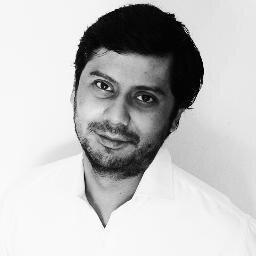Islamabad, Oct 11: A prominent journalist has been barred from leaving Pakistan after he reported on a suspected rift between civilian and military leaderships during a crucial meeting in which the Inter-Services Intelligence (ISI) was told its support for terrorist groups was leaving the country globally isolated.
 Cyril Almeida, a columnist and reporter for the Dawn, tweeted that he has been told he has been put on ‘Exit Control List' — a system of border control maintained by Pakistan government under an ordinance which allows it to bar people whose names appear on the list from leaving the country.
Cyril Almeida, a columnist and reporter for the Dawn, tweeted that he has been told he has been put on ‘Exit Control List' — a system of border control maintained by Pakistan government under an ordinance which allows it to bar people whose names appear on the list from leaving the country.
“Puzzled, saddened. Had no intention of going anywhere; this is my home. Pakistan,” Mr. Almeida tweeted.
The development came less than a week after he wrote a front-page story in the daily about a rift between Pakistan's civilian and military leaderships over militant groups that operate from Pakistan but engage in war against India and Afghanistan.
On October 6, 2016, Mr. Almeida, citing sources, reported in the widely-read daily that the civilian government has told the military leadership of a growing international isolation of Pakistan due to alleged support for militancy.
Pakistan government has thrice denied the story since.
The Foreign Office vehemently rejected the report and termed it “speculative”. On October 10, 2016, Prime Minister Nawaz Sharif ordered authorities to take “stern action” against those responsible for publishing the “fabricated” story.
“Prime Minister took serious notice of the violation and directed that those responsible should be identified for stern action,” according to an official statement.
Mr. Almeida's scoop came amidst a backdrop of heightened tension between India and Pakistan following the attack on an Indian army base in Uri on September 18 in which 19 soldiers were killed by Pakistan-backed terrorists from the Jaish-e-Mohammed outfit.
On September 29, 2016, India carried out “surgical strikes” on seven terror launch pads across the Line of Control (LoC), and the Army said it had inflicted “significant casualties” on terrorists preparing to infiltrate from Pakistan-occupied Kashmir.
Pakistan has denied the surgical strike by India but has claimed two of its soldiers were killed in alleged ceasefire violations along the LoC by Indian troops.
Puzzled, saddened. Had no intention of going anywhere; this is my home. Pakistan.
— cyril almeida (@cyalm) October 11, 2016





Comments
Add new comment